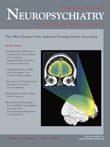Music and the Debate on Cerebral Dominance: The Classic Work of Bever and Chiarello
“Dominance of the left hemisphere for such analytic functions would explain dominance of the right ear for melody recognition in experienced listeners: as their capacity for musical analysis increases, the left hemisphere becomes increasingly involved in the processing of music. This raises the possibility that being musically sophisticated has real neurologic concomitants, permitting the utilization of a different strategy of musical apprehension that calls on left hemisphere functions.” 1
Bever and Chiarello’s innovation was to compare experienced musicians to nonmusicians on ear preference and their ability to accurately identify a two-note excerpt versus the full melody. The latter task was chosen to test their ability to analyze music by its subcomponents. Nonmusicians showed a preference for the left ear to identify whole melodies consistent with prior studies suggesting right hemisphere preference for processing musical information. Further, the nonmusicians were not able to accurately identify two-note excerpts. In contrast experienced musicians showed a right ear preference and were able to identify subcomponents. The results suggested that musical training recruited left hemisphere processing. These results show that music can be appreciated holistically as well as analyzed by its structure of subcomponents. It also shows that musical training can result in a remodeling of stimulus processing. This fits both the idea of neurologic plasticity and that musical training can actually change the physical structure of the brain.
In a phone interview, Dr. Bever stated that the experiment grew out of an honors thesis by Robert Chiarello, who was a senior at Columbia University. The citation record shows a bimodal pattern with a large number of citations in the years following the initial publication and a resurgence of citations in recent years. Dr. Bever speculated that this may relate to a rekindling of the debate on the fundamental basis of cerebral asymmetry; that is, are the hemispheres differentiated to manage different stimulus response modalities, or differentiated by aspects of computational efficiency? The results from many functional imaging studies have contributed to a reemergence of the modular view of cognitive processes, thus the debates lives on. The Bever and Chiarello article is an excellent example of how an elegant and efficient experiment can have an enduring impact on a major question in the brain sciences. And yes, both authors were enthusiastically interested in music in addition to the broad issues related to cerebral asymmetry.
1 . Bever TG, Chiarello RJ: Cerebral dominance in musicians and nonmusicians. Science 1974; 185:537–539Google Scholar
2 . Levitin DJ: This Is Your Brain On Music: The Science of a Human Obsession. New York, Dutton/Penguin Books, 2006Google Scholar
3 . Sacks O: Musicophilia: Tales of Music and the Brain. New York, Knopf, Random House NY, 2007,Google Scholar
4 . Jackson JH: Selected Writings of John Hughling Jackson, Volume 2. London, Hodder and Stoughton, 1932Google Scholar
5 . Della Penna S, Brancucci A, Babiloni C, et al: Lateralization of dichotic speech stimuli is based on specific auditory pathway interactions: neuromagnetic evidence. Cereb Cortex 2007; 17:2303–2311Google Scholar



